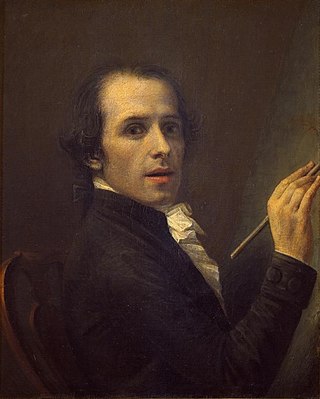
Antonio Canova was an Italian Neoclassical sculptor, famous for his marble sculptures. Often regarded as the greatest of the Neoclassical artists, his sculpture was inspired by the Baroque and the classical revival, and has been characterised as having avoided the melodramatics of the former, and the cold artificiality of the latter.

Messina is a harbour city and the capital of the Italian Metropolitan City of Messina. It is the third largest city on the island of Sicily, and the 13th largest city in Italy, with a population of more than 219,000 inhabitants in the city proper and about 650,000 in the Metropolitan City. It is located near the northeast corner of Sicily, at the Strait of Messina and it is an important access terminal to Calabria region, Villa San Giovanni, Reggio Calabria on the mainland. According to Eurostat the FUA of the metropolitan area of Messina has, in 2014, 277,584 inhabitants.

Donato di Niccolò di Betto Bardi, better known as Donatello, was an Italian sculptor of the Renaissance period. Born in Florence, he studied classical sculpture and used this to develop a complete Renaissance style in sculpture. He spent time in other cities, and while there he worked on commissions and taught others; his periods in Rome, Padua, and Siena introduced to other parts of Italy his techniques, developed in the course of a long and productive career. Financed by Cosimo de' Medici, Donatello's David was the first freestanding nude male sculpture since antiquity.
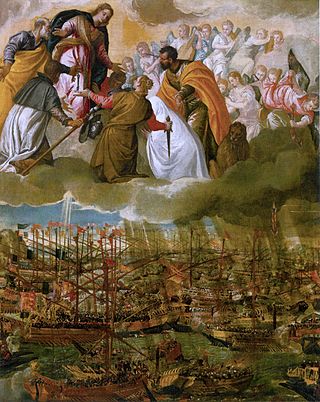
The Battle of Lepanto was a naval engagement that took place on 7 October 1571 when a fleet of the Holy League, a coalition of Catholic states arranged by Pope Pius V, inflicted a major defeat on the fleet of the Ottoman Empire in the Gulf of Patras. The Ottoman forces were sailing westward from their naval station in Lepanto when they met the fleet of the Holy League which was sailing east from Messina, Sicily. The Spanish Empire and the Venetian Republic were the main powers of the coalition, as the league was largely financed by Philip II of Spain, and Venice was the main contributor of ships.

John of Austria was the natural son born to Holy Roman Emperor Charles V late in life when he was a widower. Charles V met his son only once, recognizing him in a secret codicil to his will. John became a military leader in the service of his half-brother, King Philip II of Spain, Charles V's legitimate heir, and is best known for his role as the admiral of the Holy Alliance fleet at the Battle of Lepanto.
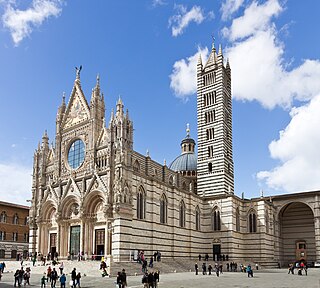
Siena Cathedral is a medieval church in Siena, Italy, dedicated from its earliest days as a Roman Catholic Marian church, and now dedicated to the Assumption of Mary.
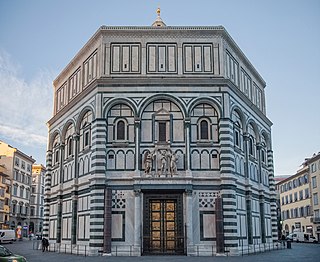
The Florence Baptistery, also known as the Baptistery of Saint John, is a religious building in Florence, Italy, and has the status of a minor basilica. The octagonal baptistery stands in both the Piazza del Duomo and the Piazza San Giovanni, across from Florence Cathedral and the Campanile di Giotto.
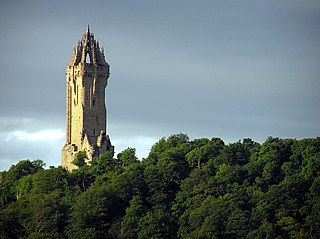
The National Wallace Monument is a 67 metre tower on the shoulder of the Abbey Craig, a hilltop overlooking Stirling in Scotland. It commemorates Sir William Wallace, a 13th- and 14th-century Scottish hero.

Castello Ursino, also known as Castello Svevo di Catania, is a castle in Catania, Sicily, southern Italy. It was built in the 13th century as a royal castle of the Kingdom of Sicily, and is mostly known for its role in the Sicilian Vespers, when it became the seat of the Sicilian Parliament. The castle is in good condition today, and it is open to the public as a museum.

The Battle of Djerba took place in May 1560 near the island of Djerba, Tunisia. The Ottomans under Piyale Pasha's command overwhelmed a large joint Christian Alliance fleet, composed chiefly of Spanish, Papal, Genoese, Maltese, and Neapolitan forces. The allies lost 27 galleys and some smaller vessels as well as the fortified island of Djerba. This victory marked perhaps the high point of Ottoman power in the Mediterranean Sea.

Boy with Thorn, also called Fedele (Fedelino) or Spinario, is a Greco-Roman Hellenistic bronze sculpture of a boy withdrawing a thorn from the sole of his foot, now in the Palazzo dei Conservatori, Rome. There is a Roman marble version of this subject from the Medici collections in a corridor of the Uffizi Gallery, Florence.

Castelvetrano is a town and comune in the province of Trapani, Sicily, southern Italy. The archeological site of Selinunte is located within the municipal territory.

San Francesco della Vigna is a Roman Catholic church in the Sestiere of Castello in Venice, northern Italy.

The Funerary Monumentto SirJohn Hawkwood is a fresco by Paolo Uccello, commemorating English condottiero John Hawkwood, commissioned in 1436 for Florence Cathedral. The fresco is an important example of art commemorating a soldier-for-hire who fought in the Italian peninsula and is a seminal work in the development of perspective.

William Shakespeare has been commemorated in a number of different statues and memorials around the world, notably his funerary monument in Stratford-upon-Avon ; a statue in Poets' Corner in Westminster Abbey, London, designed by William Kent and executed by Peter Scheemakers (1740); and a statue in New York's Central Park by John Quincy Adams Ward (1872).

The Civic Museums of Pavia are a number of museums in Pavia, Lombardy, northern Italy. They are housed in the Castello Visconteo, or Visconti Castle, built in 1360 by Galeazzo II Visconti, soon after taking the city, a free city-state until then. The credited architect is Bartolino da Novara. The castle used to be the main residence of the Visconti family, while the political capital of the state was Milan. North of the castle a wide park was enclosed, also including the Certosa of Pavia, founded 1396 according to a vow of Gian Galeazzo Visconti, meant to be a sort of private chapel of the Visconti dynasty. The Battle of Pavia (1525), climax of the Italian Wars, took place inside the castle park.
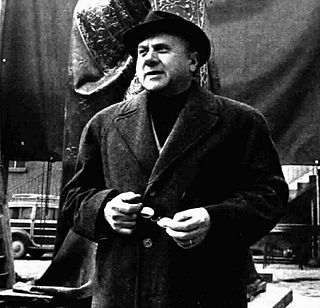
Francesco Messina was an Italian sculptor of the 20th century.

The Statue of Niels Juel, created by the sculptor Theobald Stein, was unveiled in 1881 at Holmens Kanal in Copenhagen, Denmark. It stands next to Church of Holmen where he is buried and close to his former home in Kongens Nytorv. The monument with surroundings was listed in 2004.

Anime Sante is a Catholic church located in Alcamo, in the province of Trapani.
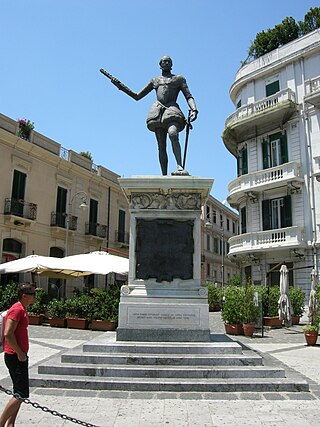
Andrea Calamech (1524-1589) was an Italian sculptor and architect.
























